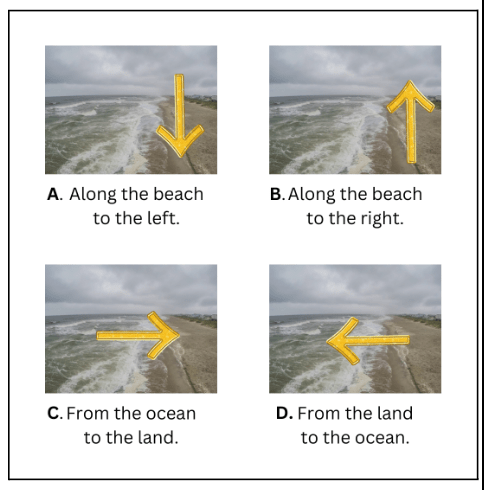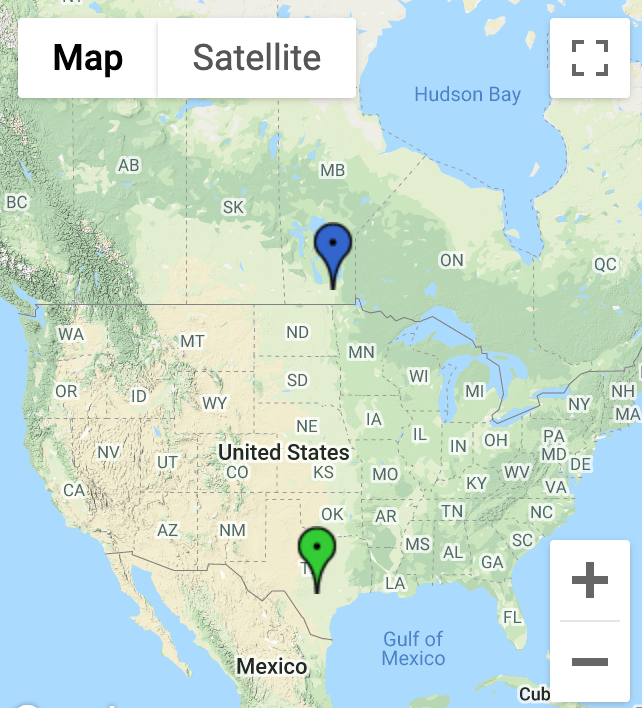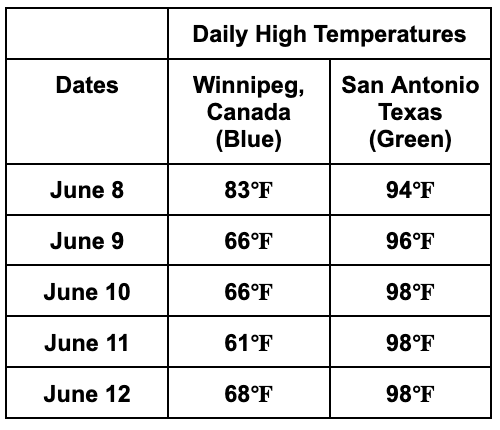When the sun warms water, which resulting process occurs?
A precipitation
B runoff
C evaporation
D condensation
C evaporation
Climate is:
A. The liquid moisture falling from the sky
B. The temperature of an area
C. The predictable pattern of weather over time
D. The weight of air particles pressing down on earth
C. The predictable pattern of weather over time
Which has the greatest effect on wind speed?
A precipitation
B cloud cover
C wind direction
D air pressure
D air pressure
What does a rising barometer mean?
A. The weather will get worse
B. The weather will improve
C. The weather will not change
D. The weather is unpredictable
B. The weather will improve
Which will be the effect of a warm front moving into an area?
A. Light precipitation will begin as the front arrives and remain after the front is gone.
B. Light precipitation will begin as the front arrives and clear after the front is gone.
C. Skies will clear as clouds are moved by the front and grow cloudy after the front is gone.
D. Skies will clear as clouds are moved by the front and remain clear after the front is gone.
B. Light precipitation will begin as the front arrives and clear after the front is gone.
One morning, Jane notices drops of water on the outside of a window. Later in the day, she notices that the drops have disappeared. What most likely caused the drops to disappear?
A The water condensed on the plants around the house.
B Energy from the sun caused the water to evaporate.
C The water cooled enough to turn into water vapor.
D Wind blowing on the window turned the water into vapor.
B Energy from the sun caused the water to evaporate.
Where did a warm, dry air mass most likely form?
A. Over cold land
B. Over a warm ocean
C. Over warm land
D. Over a cold ocean
C. Over warm land
Which best describes the cause of day-to-day weather changes?
A the rotation of Earth
B the size of Earth
C moving air masses
D action of the winds
C moving air masses
Which best describes a hurricane?
A a low-pressure weather system
B a high-pressure weather system
C a cold front
D a stationary front
A a low-pressure weather system
How does the temperature change with elevation?
A. As elevation changes, the temperature stays the same
B. Once the elevation gets higher than 1 kilometer, the temperature gets colder.
C. The higher the elevation is, the colder the temperature is
D. The higher the elevation is, the warmer the temperature is.
C. The higher the elevation is, the colder the temperature is
What must occur before clouds can form?
A Water vapor must get warmer.
B Water vapor must lose heat energy.
C Precipitation must begin to fall and run off.
D Transpiration must add water vapor to the atmosphere.
B Water vapor must lose heat energy.

It was a sunny, clear, calm day at the beach at 7 AM. The surface of the water and land were the about the same temperature. Three hours later, the land and water had warmed up some and a light wind developed. Which map would show the direction of the wind?
A. Along the beach to the left.
B. Along the beach to the right.
C. From the ocean to the land.
D. From the land to the ocean.
C. From the ocean to the land.
Which best describes why winds at the beach change direction between day and night?
A because the temperatures over land and over water change
B because warm air over land sinks and stays in place over land
C because cool air rises and is replaced by warm air from the ocean
D because cool air sinks and stays in place over land
A because the temperatures over land and over water change
On a cold, cloudy day, the local weather forecaster predicts that a high-pressure system will be moving into the area in the next 24 hours. Which weather conditions will this system most likely bring to the area?
A stormy
B sunny
C snowy
D hot
B sunny
How does the Gulf Stream influence precipitation patterns on the east coast of the United States?
A. It adds warm water to the Gulf of Mexico.
B. It brings cool water to the surface from the deeper ocean waters.
C. It adds warm water to storm systems that move north along the coast.
D. It adds cool water to storm systems that move south along the east coast.
C. It adds warm water to storm systems that move north along the coast.
In which way are evaporation and condensation similar?
A Both cause decreases in air temperature.
B Both cause increases in air temperature.
C Both are caused by the warming of the atmosphere.
D Both are caused by changes in heat energy.
D Both are caused by changes in heat energy.


When is the greatest change in temperature from day-to-day in Winnipeg?
A. June 8 to June 9
B. June 9- June 10
C. June 10-June 11
D. June 11-12
A. June 8 to June 9
In North Carolina, the wind is blowing from the north. If the wind changes direction and begins to blow from the south, what will most likely result?
A The temperatures will increase.
B The temperatures will decrease.
C The air pressure will increase.
D The wind speeds will decrease.
A The temperatures will increase.
Which will most likely result from a low-pressure weather system?
A warm temperatures
B cloudy conditions
C clear conditions
D cool temperatures
B cloudy conditions
Which instrument is best used to predict weather changes?
A a hygrometer
B an anemometer
C a thermometer
D a barometer
D a barometer
One morning, a student notices that the grass in the area is wet, although it had not rained during the night. What could have caused the grass to be wet?
A During the night, water had evaporated from the trees in the area.
B The air above the ground became warmer during the night and caused precipitation.
C When the air cooled above ground during the night, water vapor condensed on the grass.
D The grass soaked up water from the ground during the night.
C When the air cooled above ground during the night, water vapor condensed on the grass.
Which best describes how the Gulf Stream affects the areas along the coast of North Carolina?
A It causes winds to move from north to south during the winter.
B It causes winds to move from north to south during the summer.
C It causes land temperatures along the coast to be colder in the winter.
D It causes land temperatures along the coast to be milder in the winter.
D It causes land temperatures along the coast to be milder in the winter.
How do sea breezes affect weather?
A. They bring warm air from land to the ocean.
B. They bring warm air from the ocean to land.
C. They bring cool air from land to the ocean.
D. They bring cool air from the ocean to land.
D. They bring cool air from the ocean to land.
On a June day, a warm, moist air mass slowly passes over a colder air mass in North Carolina. What will most likely happen next?
A Rain will fall.
B Cirrus clouds will form.
C Skies will clear.
D Atmospheric pressure will rise.
A Rain will fall.
What is the weather like after a cold front passes through?
A.Dry and warm
B. Wet and warm
C. Dry and cold
D. Wet and cold
C. Dry and cold